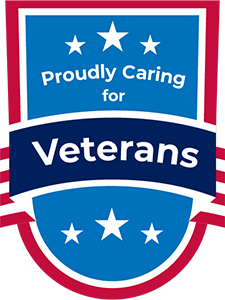Many people feel overwhelmed when it comes to exploring their emotions, as they could feel a million different ways or not able to identify really how they’re feeling. In recovery, one of the greatest gifts (and challenges) is getting our emotions back.
Active addiction leaves us in a state of numbness, where we may have trouble understanding how it is we are feeling in any given moment. The beauty of addiction treatment is learning how to understand our emotions, where they stem from, and how to process and work through them effectively. At Royal Life Centers, we offer intensive therapies including behavioral therapies— where guests will learn how to identify and regulate emotions, and use interpersonal effectiveness when expressing their feelings to others.
Core Emotions
Did you know that humans can experience upwards of thirty-four thousand emotions? Our emotional spectrum is complex, however, all emotions stem from the core emotions. In a study conducted by Glasgow University, researchers found that all human behavior can be reduced to four core emotions, including: fear, anger, sadness, and happiness (BBC). We believe that fear, hurt/sadness, and happiness are the true core emotions. All emotions stemming from these core, or primary, emotions, are secondary emotions and a list of counterparts. Core emotions are the foundation for all other emotions we can feel.
The Emotional Process
When an emotion is felt, it goes through a process that involves various emotion components. The emotion components are as follows:
- Subjective Feeling Component
- Action Tendency Component
- Appraisal Component
- Motor Component
- Physiological Component
- denial
- regression
- acting out
- dissociation
- compartmentalization
- projection
- reaction formation
- repression
- displacement
- intellectualization
- rationalization
- undoing
“This is where an individual simply experiences the feelings. It’s about monitoring the internal universe and recognizing what is being experienced at that time.”
“Once the emotion is identified, the body moves into action. Emotions bestow certain actions instead of others, which means that while some are beyond our control (and thankfully so), like pulling your hand away from a hot iron, others are within our control, facing the fear to continue with a speech or a presentation.”
“By cognitively analyzing the emotion, the individual is able to pick up on the situations, actions, environments, or individuals that are causing the emotion. This aids the individual in tracking how these stimuli impact their well-being. It’s also invaluable for helping communicate the state of our internal world with others.”
“This is the communicative function of how we express what we are experiencing (facial expressions, hand gestures, body movements, etc.). So it is extremely important on the inter-individual level, as well as that of the individual.”
This component supports all others and is the chemical reaction our body experiences. For instance, the rush of blood flow to the hands when one experiences the emotion of anger.
(Karimova).
Combining Emotions
If you have a combination of emotions, you can produce new emotions. For example, say you were experiencing both fear and trust, this emotional recipe leads to submission. Another example is joy and trust, which equal love. Another emotion that could be produced by two other emotions is contempt, the result of feeling anger and disgust simultaneously. Primary emotions can combine to create another emotion.
Emotional Duality
Just like the color wheel, every emotion has an opposite. Opposite of happiness is sadness, opposite of grief is ecstasy, opposite of loathing is admiration, and the list goes on. Each core emotion gives way to primary emotions; each primary emotion gives way to a list of similar emotions that stem from that primary emotion. Emotional duality is not only visually represented in Robert Plutchik’s Wheel of Emotions, but also, as humans we can experience opposite emotions at the same time. Our emotions are a tool that we use to make sense of whatever we are experiencing, which sometimes can be confusing in itself. We may feel angry and joyful at the same time, or happy and sad. There are really no rules when it comes to emotions, we feel what we feel.
Emotional Intensity
As emotions move from the outside, inward (toward the core emotions), the emotions will intensify. “emotions intensify as they move from the outside to the center of the wheel. For example, a feeling of boredom can intensify to loathing if left unchecked. This is an important rule about emotions to be aware of in relationships: If left unchecked, emotions can intensify” (Donaldson). The most intense emotions are your core emotions, for which all other emotions stem from. These core emotions will dictate the way you think and act, so in order to understand your thoughts and behaviors, you must identify which core emotion your feelings are coming from.
Defense Mechanisms
We find that feeling fearful, hurt, or ashamed, are some of the strongest emotions. With these emotions, many people will use defensive reactions to avoid facing the intense emotion. For example, if you are feeling hurt, you may resort to defensive reactions including: sex, food, anger, drugs, alcohol, humor to deflect, gambling and other behavioral addictions, staying “busy”, and emotionally reactive actions like completely cutting a person off. If you are feeling fearful, you will experience a fight or flight stress response, which may result in dissociation, aggression, or completely shutting down.
While in recovery from alcoholism or drug addiction, many guests must work against the defense mechanisms they have spent a lifetime strengthening. Most defense mechanisms are strengthened out of fear, or to protect happiness or contentment. Some secondary emotions you may experience while trying to avoid fear, hurt, or shame can include: anger, worry, apathy, anxiety, irritability, frustration, or numbness.
As recovering addicts and alcoholics, we have a wide range of defense mechanisms which we use to cope. Part of addiction recovery is learning new ways to cope, or healthier ways to cope and process. Defense mechanisms are learned behaviors, so we must understand the reasoning behind our defense mechanisms to unlearn the behavior and choose healthier behaviors moving forward. In order to change our primitive defense mechanisms, we first need to identify them.
Some defense mechanisms include:
Denial is “the refusal to accept reality”. People in denial will simply act as if a painful event, thought, or feeling does not exist (Grohol).
“Regression is the reversion to an earlier stage of development in the face of unacceptable thoughts or impulses…An adult may regress when under a great deal of stress, refusing to leave their bed and engage in normal, everyday activities” (Grohol).
“Acting Out is performing an extreme behavior in order to express thoughts or feelings the person feels incapable of otherwise expressing. Instead of saying, “I’m angry with you,” a person who acts out may instead throw a book at the person, or punch a hole through a wall” (Grohol).
“A person who dissociates often loses track of time or themselves and their usual thought processes and memories. People who have a history of any kind of childhood abuse often suffer from some form of dissociation….People who use dissociation often have a disconnected view of themselves in their world. Time and their own self-image may not flow continuously, as it does for most people. In this manner, a person who dissociates can “disconnect” from the real world for a time, and live in a different world that is not cluttered with thoughts, feelings or memories that are unbearable” (Grohol).
“Compartmentalization is a lesser form of dissociation, wherein parts of oneself are separated from awareness of other parts and behaving as if one had separate sets of values” (Grohol). Compartmentalization is basically thinking your way into understanding something by piecing it up in your mind and finding reasons to believe one thing is right, despite a strong impulse to not think that way.
“Projection is the misattribution of a person’s undesired thoughts, feelings or impulses onto another person who does not have those thoughts, feelings or impulses. Projection is used especially when the thoughts are considered unacceptable for the person to express, or they feel completely ill at ease with having them” (Grohol).
“Reaction Formation is the converting of unwanted or dangerous thoughts, feelings or impulses into their opposites. For instance, a woman who is very angry with her boss and would like to quit her job may instead be overly kind and generous toward her boss and express a desire to keep working there forever” (Grohol).
“Repression is the unconscious blocking of unacceptable thoughts, feelings and impulses. The key to repression is that people do it unconsciously, so they often have very little control over it” (Grohol).
“Displacement is the redirecting of thoughts feelings and impulses directed at one person or object, but taken out upon another person or object. People often use displacement when they cannot express their feelings in a safe manner to the person they are directed at” (Grohol).
“Intellectualization is the overemphasis on thinking when confronted with an unacceptable impulse, situation or behavior without employing any emotions whatsoever to help mediate and place the thoughts into an emotional, human context. Rather than deal with the painful associated emotions, a person might employ intellectualization to distance themselves from the impulse, event or behavior” (Grohol).
“Rationalization is putting something into a different light or offering a different explanation for one’s perceptions or behaviors in the face of a changing reality” (Grohol).
“Undoing is the attempt to take back an unconscious behavior or thought that is unacceptable or hurtful. For instance, after realizing you just insulted your significant other unintentionally, you might spend then next hour praising their beauty, charm and intellect. By “undoing” the previous action, the person is attempting to counteract the damage done by the original comment, hoping the two will balance one another out” (Grohol).
Navigating Through Secondary Emotions
Every emotion can be reduced to underlying core emotions, which are fear, hurt/sadness, and happiness. Although anger is listed as a core emotion, we believe that anger can stem from hurt or sadness, and/or fear. Anger is a strong and intense emotion, but it is almost always preceded by another emotion. “Anger is often called a secondary emotion because we tend to resort to anger in order to protect ourselves from or cover up other vulnerable feelings. A primary feeling is what is what is felt immediately before we feel anger. We almost always feel something else first before we get angry. We might first feel afraid, attacked, offended, disrespected, forced, trapped, or pressured. If any of these feelings are intense enough, we think of the emotion as anger” (CRE).
Emotional Health
Emotional health is achieved when we can properly identify our emotions, process them fully, and communicate them effectively. Our emotional health is a product of practicing healthy behaviors, skills, and tools. At Royal Life Centers, we focus on the mind, body, and spirit for a full recovery. Part of our recovery process includes behavioral therapies, which are invaluable for guests to learn skills and tools that will help them navigate, process, and communicate their emotions effectively. In addition to behavioral therapies, we provide intensive therapies including: individual therapy sessions, group therapy, support groups, adventure therapy, activity therapy, and equine therapy. We want to see all of our guests reach optimal health, mentally and emotionally, physically, and spiritually. As Nicholas Sparks once said, “the emotion that can break your heart is sometimes the very one that heals it.” We believe the root of our emotions hold many of the keys to recovery, which is why we emphasize emotional health and emotional healing.
Reach Out
If you or someone you know is struggling with an addiction, please reach out to our addiction specialists at (877)-RECOVERY or (877)-732-6837. Our team is available to take your call 24 hours a day, 7 days a week. Because We Care.
References:
“All Human Behaviour Can Be Reduced to ‘Four Basic Emotions’.” BBC News, BBC, 3 Feb. 2014, www.bbc.com/news/uk-scotland-glasgow-west-26019586
CRE. “Anger: A Secondary Emotion.” Managing Anger, Conflict Resolution Education, creducation.net/resources/anger_management/anger__a_secondary_emotion.html
Donaldson, Melissa. “Plutchik’s Wheel of Emotions – 2017 Update • Six Seconds.” Six Seconds, Six Seconds, 27 Apr. 2017, www.6seconds.org/2017/04/27/plutchiks-model-of-emotions/
Grohol, John M. “15 Common Defense Mechanisms.” Psych Central, PsychCentral, 8 Oct. 2018, psychcentral.com/lib/15-common-defense-mechanisms/
Karimova, Hokuma. “The Emotion Wheel: What Is It and How to Use It? [+PDF].” Positive Psychology Program, Positive Psychology Program B.V., 27 Apr. 2019, positivepsychologyprogram.com/emotion-wheel/





